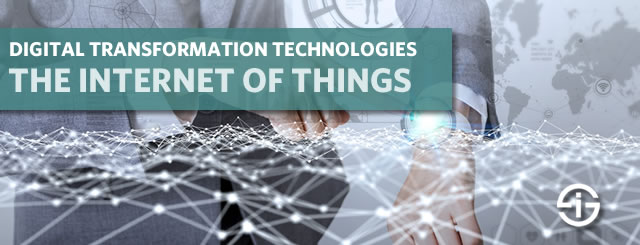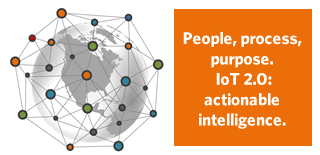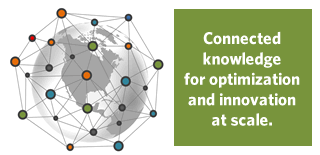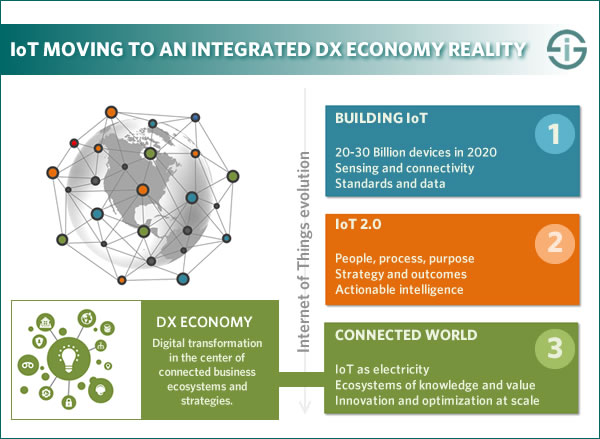The Internet of Things or IoT is one of the key digital transformation technologies. In fact, it’s not just one technology as many keep saying but a series of technological and other components that is really vast.
If we look at digital transformation technologies as (sets of) technologies which enable cyber-physical digital transformation strategies, business creation/change opportunities and improvements in the ways we work, live, entertain ourselves and connect, the Internet of Things is the most impactful and vast of them all. This is certainly the case in the Industrial Internet of Things ‘segment’.

The sheer number of devices and connections which are projected to join the Internet of Things is staggering. Yet, it’s not that much about the devices of course, although they are an indicator and the larger IoT projects get, including the number of devices, the more mature digital transformation benefits of IoT become, making it the Internet of Transformation in correlation with other technologies and the transformational goals per use case.
The Internet of Things: a matter of data and business in transformation
With the addition of sensing and data transmitting devices to networks of connectivity and value comes an avalanche of data on top of our big data universe. With the growth of the Internet of Things we already have more data in specific industries and applications (e.g. life sciences) than we can humanly handle.

While devices and connectivity are of course all important, whether it’s in the Industrial Internet of Things or the Consumer Internet of Things where the device obviously has an additional dimension, in the end the Internet of Things is an umbrella term. It covers many things, and at the same time is part of a bigger ecosystem of technologies and value. Data, why we capture it using IoT and how we turn it into knowledge (DIKW), matters a lot, especially as the Data Age study shows IoT data volumes grow fastest.
It’s the ways in which we analyze and use this data to enhance what we do across all areas of society that makes the Internet of Things so powerful and truly the Internet of Transformation. It’s the way we combine data and intelligence to power innovative and transformational smart services with data exchange models and business model innovation. It’s clear that big data analysis, the cloud and other related technologies to enable this move from data to knowledge to outcome are all key digital transformation technologies.
While concerns in several areas are tackled and increasingly will, companies across the globe are investing in the Internet of Things and already achieve considerable benefits. Others move slower, while consumer adoption of the Internet of Things also picks up. Despite the fact that connecting devices is not new and that with the Internet of Things we have entered a new dimension in many areas, we are still at the beginning of an era of accelerating Internet of Things adoption. And it will be a key pillar in the digital transformation economy.
Internet of Things 2.0: moving to integration and outcomes in the Internet of Transformation
All components and layers of an Internet of Things project or solution are important. Today most people focus on the devices, the connections and the volumes. Enter what we could call Internet of Things 2.0 and where we see all digital transformation technologies meet each other, depending on use case, scope, etc. on the road to an Internet of Transformation.
66 percent of executives says that for them without IoT there is no digital transformation. Meet the Internet of Transformation.
As said, the Internet of Things is such a vast reality that it has become an umbrella term for many underlying use cases, technologies and other aspects.
It’s why we started to distinguish between the Consumer Internet of Things and the Industrial Internet of Things. It’s also why some prefer terms such as the Internet of Everything, and in an industrial context, simply the Industrial Internet.
Regardless of how we call it, the Internet of Things 2.0 reality is about an Internet of Transformation that is put in the context of related technologies, processes, people, benefits, outcomes and massive real-life opportunities, rather than just the technology and device aspect.
It’s about how we move to a hyper-connected world with goals in mind and roadmaps to achieve these goals clearly defined. And in that roadmap will be several digital transformation technologies. We already see how the convergence of IoT, AI and big data analytics is transformational on a technological level. We also see how executives realize that digital transformation is sheer impossible in many industries and use cases without the IoT. According to the IoT Barometer 2017/2018 a whopping 66 percent of executives says so: no digital transformation without IoT for them.
The hyper-connected world: leveraging connected knowledge at scale for optimization, innovation and human purpose
Internet of Things 2.0 in the end leads to an even more hyper-connected world where eventually the term Internet of Things will disappear or be used like we use the term Internet today: as a given, a new normal, a bit like electricity. That’s when it will be the Internet of Transformation although no one will really call it like that.

Internet of Things 2.0 moves from devices and data to actionable intelligence and purposeful action and transformation. The focus will be on the possibilities of hyper-connectivity, less from the connectedness perspective as such but more about how we can improve business, life and society, using the insights gained, thanks to the hyper-connectedness of which the Internet of Things is a crucial additional component. IoT is not just transforming technologies, industries and the various digital transformation goals, it is also radically transforming and – yes – disrupting existing channels in IT and OT with far-reaching consequences in traditional go-to-market approaches. It is also transforming the nature of work, changing the role or even existence of the middleman, the list is endless.
In order to connect the dots and realize the benefits of this hyper-connected world it’s important to see the Internet of Things puzzle, the various pieces of that puzzle, why we want to complete it to start with, and what is needed to put the puzzle in a safe, valuable and broader perspective.
As usual, this requires a high-level understanding, an understanding of how the Internet of Things fits in the scope of digital transformation and various related digital transformation technologies, insights regarding the Internet of Things beyond the “number of connected devices level” and a holistic view of people, purpose, process and actionable information.
The Internet of Things is about to change entire industries (look at what’s happening with Industry 4.0) and already transforms organizations in the true sense of the word and on all levels, ranging from customer experience to the transformation of business models and real innovation as we speak. Don’t look too much at consumer applications to find how. Sectors such as life sciences, building management, manufacturing, healthcare and more which are tackled across our site are far more impressive – for now.

Top image: Shutterstock – Copyright: chombosan – All other images are the property of their respective mentioned owners.

